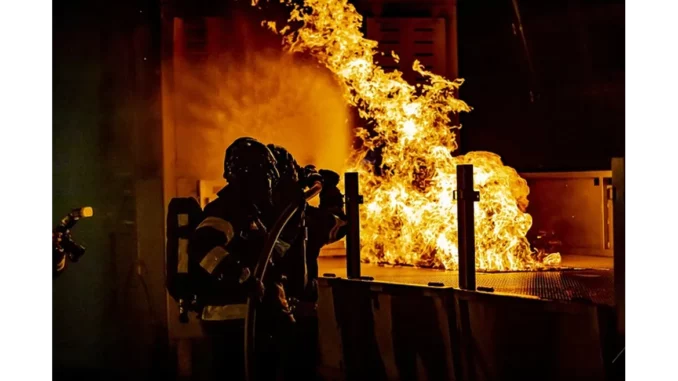
In a recent insightful discussion with Robert Mitchell, a distinguished fire safety consultant with over two decades of experience, the critical issue highlighted by CROSS-UK regarding the risk of rendering Automatic Opening Vents (AOVs) inoperative during construction activities came to the fore. This conversation underscored the essential nature of these components in ensuring building safety and the need to maintain their functionality throughout construction processes.
Air quality is vital in planning. See how Focus360 Energy can assist.
“Automatic Opening Vents are crucial yet often neglected elements within fire safety systems,” Robert stated with a blend of authority and approachability. These vents are engineered to expel smoke from buildings, providing a safer environment for occupants to evacuate and enabling firefighters to operate more effectively during emergencies. However, the recent Red Safety Alert issued by CROSS-UK has drawn attention to a concerning trend where AOVs are obstructed by façade materials, scaffolding, or simply overlooked during construction. Robert painted a vivid picture of the potential ramifications: “Imagine these life-saving systems being blocked. It’s not merely an inconvenience; it’s a significant hazard that could lead to catastrophic outcomes.”
This alert serves as a clarion call for fire safety managers, contractors, and building designers. Robert recounted an alarming incident detailed in CROSS Safety Report 1347, where AOVs became inoperative for months during cladding remediation. In one example, the vents were disconnected from their electrical components, while in another, screws for cladding were directly affixed to AOV frames, rendering them non-functional. Such scenarios illustrate the critical need for vigilance and proactive strategies to prevent similar occurrences.
Robert emphasised the importance of updating fire risk assessments in conjunction with ongoing construction activities. “Fire risk assessments should be dynamic documents,” he asserted, “reflecting the current state of a building, especially during construction work.” He proposed interim control measures to mitigate risks, such as temporary markings and clear signage on AOVs to highlight their importance. These simple yet effective strategies can ensure that everyone on-site is cognisant of these crucial safety features.
Moreover, training emerged as a pivotal factor in maintaining AOV functionality. “Construction workers must comprehend the role of AOVs in fire safety,” Robert stressed. Enhanced training programmes can equip workers with the necessary knowledge to recognise and protect these elements during their tasks. Robert passionately elaborated on the role of communication in preventing obstructions, citing an example from Report 1380, where construction workers accidentally covered AOVs during façade work. “This was a classic case of miscommunication,” he observed. “Clear communication about the importance of AOVs could have prevented the issue.”
As the discussion progressed, Robert emphasised the broader context of evacuation strategies, particularly for buildings with combustible cladding undergoing remediation. “It’s not just about the vents,” he clarified. “It’s about understanding the entire fire safety ecosystem and ensuring that all components work in harmony.” Contractors and building managers must recognise the implications of their activities. “Every piece of equipment, every pole, every temporary covering needs to be considered in the context of fire safety,” Robert advised. “Obstructions, even temporary ones, can have dire consequences during a fire.”
Guidance from CROSS-UK also underscores the importance of ensuring that all AOVs are identifiable and accessible, particularly in high-rise residential buildings. “Signage indicating the presence and importance of AOVs is vital,” Robert added. “It’s a straightforward measure that can save lives.”
Robert concluded with reflections on the broader implications of the CROSS-UK alert, emphasising the responsibility shared by all stakeholders in ensuring safety. “These alerts are not just bureaucratic exercises. They are essential reminders of our collective duty to ensure safety,” he remarked. By prioritising fire risk assessments and integrating them into construction workflows, we can prevent obstructions and guarantee that these vital systems function when most needed.
The insights shared by Robert Mitchell serve as a compelling reminder of the importance of diligence and collaboration in maintaining fire safety during construction activities. Through updating fire risk assessments and ensuring clear communication and training, we can safeguard the functionality of AOVs and, ultimately, protect lives.


Be the first to comment